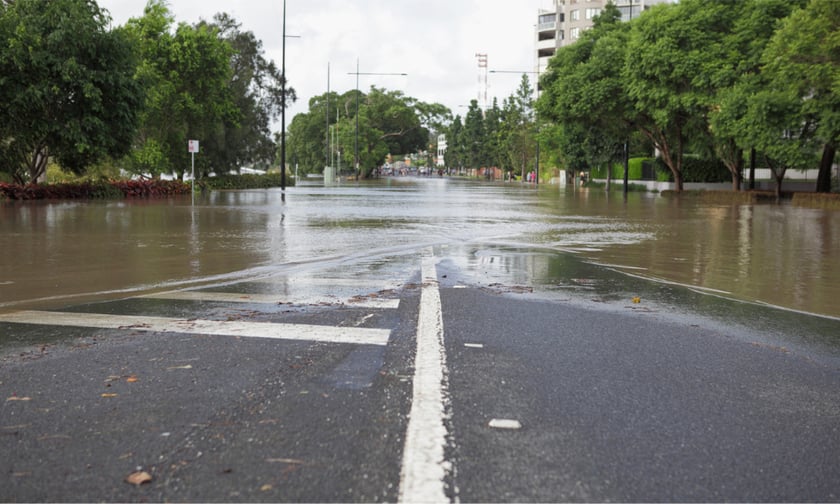

As severe flash flooding and severe water damage become a rising risk in Canada, coverage and broker talking points are evolving to address the intensity and frequency of extreme weather. Spring thaw is creating opportunities for drainage backups and property damage due to yo-yoing temperatures and unpredictable precipitation.
According to Jim Mandeville, senior vice president, large loss at First Onsite Property Restoration, “insurance policies are evolving with changing climate concerns, which is something brokers should emphasize to clients who may be vulnerable.” Mandeville has years of experience working in the disaster relief sector, being on the front lines of restoration and mitigation projects across North America including Hurricane Sandy, the Slave Lake wildfires of 2011 and the Fort McMurray flooding of 2013, to name a few.
Insurance Business spoke with Mandeville about the most common causes of property damage related to flooding and how insurance companies and brokers are responding to these contemporary climate concerns.
In Canada, the threat of water-related damage is not a localized phenomenon — it knows no boundaries. Furthermore, the nation’s infrastructure was traditionally built to withstand snow and less extensive rainfall. However, “it was not designed to handle these huge surges of water, where a lot of snowfall melts fairly quickly and is accompanied by torrential downpours not long afterward,” Mandeville said.
This can result in flooding, which is generally categorized into types, with the first and most common being drain backup, which happens when a building or home gets overwhelmed by a sudden upsurge in water, typically effecting floor drains and tubs.
The second and most newsworthy type of water-related incident is flash flooding. This generally populates headline stories with images of residential areas submerged as rivers and lakes severely overflow.
This type of environmental catastrophe has been gaining traction in political rallying calls as of late, where cities across Ontario are calling on the federal government to provide infrastructure aid to mitigate further flooding damages. Jeff Leal, mayor of Peterborough, said that “Infrastructure improvements are essential as the City of Peterborough continues to mitigate impacts of climate change.”
Additionally, there is a need for awareness of the potential for mould growth in the aftermath a flood, as it takes only 48 hours for the spores to begin to form if it is not promptly taken care of.
There is a range of risks that come with frequent extreme weather events, and they are treated differently by insurers. “The vast majority of insurance policies in Canada cover drain back ups and water damage in the home,” Mandeville said.
However, flash flooding is a bit more complex, as it is additional coverage that needs to be purchased separate from any home or business insurance and is not available in all areas of the country.
While flash flooding coverage may not be a new phenomenon, finding an insurance policy to remediate its effects has been particularly burdensome. “Five years ago, it was very difficult to even acquire coverage for flash flooding on a residential property,” Mandeville said.
Today, most major insurers offer some type of flash flooding coverage as they recognize the pervasive threat it poses to home and business owners alike, which is an additional talking point brokers can bring up to their clients.
While the situation in Canada may be cause for alarm, risk assessors are looking to other parts of the world and witnessing far more devastating trends due to extreme weather. Mandeville pointed out the situation in Florida, where property insurers are exiting the state en masse as hurricanes increase in severity with each passing season, leaving large swaths of the population uninsurable.
As is par for the course when purchasing insurance, many consumers, especially those on a residential level, are not familiar with the particularities of their coverage.
“Brokers and direct writers have a big role to play in educating their customers,” Mandeville said. “There are a lot of Canadians who are upset when they learn that their coverage doesn’t cover a particular loss, but they are also the ones who demand they receive the cheapest policy without factoring in potentially catastrophic vulnerabilities.”
Thus, it is imperative for brokers to use their time with their client to assess the different types of risk that emerge from evolving weather conditions and raise any concerns in the present to mitigate future woes.
Mandeville urged brokers that are dealing with clients in particularly vulnerable areas that can be susceptible to flooding to reach out and offer this form of coverage or at least speak in depth about it. “Brokers can definitely raise the point that it can safeguard a policyholder against damages that may cost upwards of tens of thousands of dollars.”
